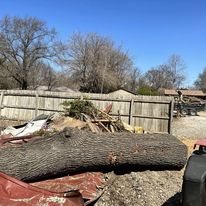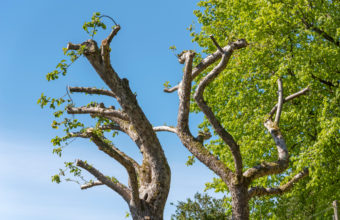Pruning during the summer months is generally acceptable for many trees.
Here are certain considerations and potential effects to be aware of…
- Stress on the Tree – Summer pruning can introduce additional stress to a tree, especially if it’s done during periods of high temperatures and drought. Trees are actively growing and transpiring water during the summer, and pruning can temporarily disrupt their normal physiological processes.
- Increased Vulnerability to Pests and Diseases – Fresh pruning wounds are more susceptible to pests and diseases. Insects and pathogens may be more active during the summer, and the open cuts can provide entry points for them. Use clean, sharp tools and avoid unnecessary pruning to minimize the risk of infestations.
- Sunburn and Heat Stress – Pruning can expose previously shaded branches to direct sunlight, leading to sunburn. This is particularly a concern for species that are sensitive to intense sunlight. Sunburn can cause damage to the bark and underlying tissues. To reduce the risk, consider leaving some foliage to provide shade for recently exposed branches.
- Watering Considerations – After pruning, trees may require additional water to help them recover and reduce stress. Adequate watering is crucial, especially during dry periods.
- Flowering and Fruit Production – For trees that produce flowers and fruits, summer pruning can impact the following year’s bloom and fruiting. It’s generally advisable to prune these trees immediately after they have finished flowering.
- Selective Pruning – If summer pruning is necessary, focus on selective and light pruning rather than heavy removal of branches. Avoid removing more than 25-30% of the tree’s foliage to minimize stress.
- Professional Advice – If you are uncertain about the timing and extent of pruning for a specific tree, it’s recommended to consult with a certified arborist or tree care professional. They can provide guidance based on the particular needs of the tree species and local conditions.
While summer pruning is possible, approach it with care and consider the specific requirements of the tree species, local climate conditions, and the reasons for pruning. Responsible pruning practices help promote the health and longevity of trees.






